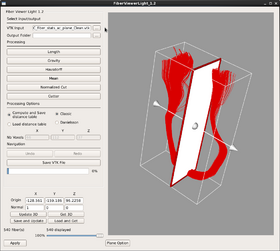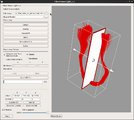Documentation/4.10/Extensions/FiberViewerLight
|
For the latest Slicer documentation, visit the read-the-docs. |
Introduction and Acknowledgements
Author: Francois Budin
Contributors: Jean-Baptiste Berger (NIRAL, University of North Carolina), Clement Vachet (SCI Institute, University of Utah), Francois Budin (NIRAL, University of North Carolina), Martin Styner (NIRAL, University of North Carolina)
Contact: Francois Budin, fbudin![]() unc.edu
unc.edu
Website: http://www.nitrc.org/projects/fvlight/
License: Apache License, Version 2.0
Extension Description
Quick Tour of Features and Use
FiberViewerLight is a light version of FiberViewer. It is used for fiber clustering thanks to methods such as Length, Gravity, Hausdorff, or Mean Distribution and Normalized Cut.
A list panels in the interface, their features, what they mean, and how to use them.
|
Use Cases
Similar Extensions
N/A
Information for Developers
More information as well as the source code can found on the project webpage: http://www.nitrc.org/projects/fvlight/





